England's 16th Century Challenge to Spain's Global Supremacy
Francis Drake's adventures as a explorer is discussed in this article as England plunders the riches of Portugal and Spain. An Antipodean travel company serving World Travellers since 1983 with small group educational tours for senior couples and mature solo travellers.
18 Nov 24 · 18 mins read

Sir Francis Drake and England’s Challenge to Spain’s Global Supremacy
On the morning of December 13, 1577, Francis Drake, a pirate and former slaver, ordered his small fleet in Plymouth, England, to weigh anchor. Two of the most consequential figures of this era, Francis Drake and Queen Elizabeth I, knew the expedition’s true purpose: to circumnavigate the globe. If successful, Drake would take his place in history as the first captain to command his fleet around the world — and return alive. For Elizabeth, the expedition was a challenge to the global order, which ranked Spain dominant and England a second-rate island kingdom. Both dreamed the voyage would reap riches.
Drake’s daring circumnavigation was not merely an adventure but a strategic move against Spain’s overwhelming dominance. Sponsored secretly by Elizabeth, his mission aimed to disrupt Spanish economic supremacy, plunder their treasure, and assert English naval prowess. His successes in capturing Spanish ships and raiding settlements marked a pivotal shift, demonstrating England’s rising maritime capabilities and challenging Spain’s control over the New World.
This audacious venture underscored England’s ambition to emerge as a global power. Drake’s exploits directly contributed to the weakening of Spanish hegemony and laid the groundwork for England’s imperial expansion. His voyage was a turning point, symbolizing the beginning of England’s transition from an isolated island nation to a burgeoning empire poised to rival Spain’s global supremacy.
This article delves into Elizabethan England’s challenge to Spain’s global dominance in the 16th century. It is intended as background reading for Odyssey Traveller’s Habsburg Spain vs Tudor England small group tour. This escorted tour for seniors explores the life and times of the royal families responsible for making England Spain so significant in the 16th century. Beginning in London and ending in Madrid, this tour offers a 21-day detailed itinerary, with a tour leader and local guides, visiting various destinations, walking down beautiful streets, immersing ourselves in city tours, going sightseeing, discovering heritage sites, and immersing ourselves in culture.
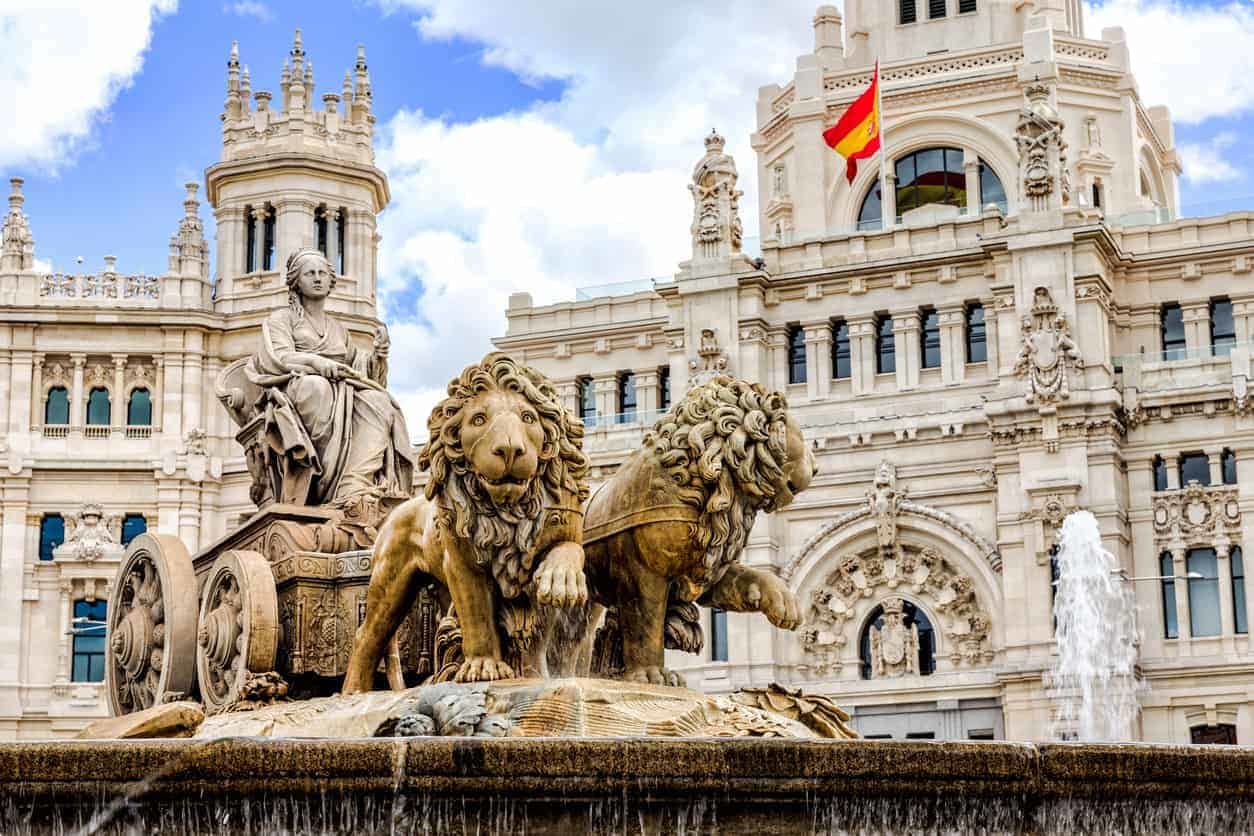
Article continues below.
The Spanish Empire
By the mid-16th century, the Spanish monarchy had established one of the largest and wealthiest empires in history. Built on slavery and the confiscation of wealth, especially gold and silver, the empire reached its zenith during the reign of Charles I (1516-1556) and Philip II (1556-1598).
The empire first expanded following its sponsored voyages of Christopher Columbus from 1492 onwards, which led to the discovery of the Americas and opened up vast territories for Spanish exploration and conquest. This led to the pope-sanctioned Treaty of Tordesillas (1494), dividing the entire world, known and unknown, between Spain and Portugal. Demarcated along an imaginary north-south vertical line positioned west of Cape Verde and extending around the world, the lands to the east of this line would belong to Portugal and the lands to the west to Spain. For a time, a surprising number of nations complied with this arbitrary arrangement, giving Spain control over most of the Americas.
The Spanish conquest of major indigenous empires in the Americas followed in 1519-1633, including by Hernán Cortés’ conquest of the Aztecs (1519-1521) and Francisco Pizarro’s of the Incas (1532-1533). This allowed the Spanish to establish a structured colonial administration, with viceroyalties such as New Spain (Mexico) and Peru, ensuring control and systematic exploitation of resources.

Trade and navigation between Spain and the Americas were controlled and regulated by the Casa de Contratación, or House of Trade, founded in Seville in 1503. It managed the passages of two treasure fleets, each responsible for transporting a variety of valuable goods between the Americas and Spain, including precious metals such as gold and silver, agricultural products, manufactured goods, luxury goods, cultural and scientific items, people, and livestock.
The first fleet, the Flota de Indias, operated between Seville and the Caribbean Spanish West Indies. Its ships docked in distant ports like Veracruz and Cartagena before stopping in Havana and returning to Spain. A second route, the Galéon de Manila, connected the Philippines with Acapulco across the Pacific, where precious commodities from the other side of the world were transferred by mule train to Veracruz and loaded onto treasure ships bound for Spain.
The Casa also held several other functions. It collected taxes, imposing a 20 percent levy, known as the quinto royal, or royal fifth, on the precious metals coming into the country. It ran a school dedicated to training pilots for ocean navigation. And it maintained an extensive, evolving cartographic database called the Padrón Real, or Royal Register. Begun in 1508, this database was a compilation of routes for the treasure fleet, with every ship in the fleet carrying a copy.
The Spanish system, with its Casa, Padrón, and centralized administration, proved efficient. Each year two fleets protected by military ships departed from Spain carrying goods for Spanish America. Their route followed the coast of Africa to the Canary Islands, where they took on provisions before heading west across the Atlantic to the Caribbean.

The fleets then split, with one heading to Mexico to load up on porcelain and silk from China, and the other to Cartagena to collect silver, especially Peruvian silver from the seaport of Callao near Lima, and from Potosí in Bolivia’s southern highlands. Some silver was transported by mule train, especially near the Isthmus of Panama, one of the few places where it was vulnerable to marauders. After loading, the treasure fleet’s ships made for Havana, where they formed a convoy to return to Spain.
One ship in the treasure fleet carried as much as two million pesos. Of four billion pesos mined during this era, about two and a half billion found their way to Western Europe, and the rest went to Asia, or remained in Spanish America.
Amidst this wealth was appalling suffering. During the early years of the Spanish empire, an estimated seventy million people perished, more than 80 percent of the entire indigenous population of Central and South America. This devastation is considered the worst genocide in history. Many died simply because they lacked immunity to the germs and diseases brought by the Spanish invaders. As a result, indigenous people, languages, and cultures vanished.
Survivors lived under harsh conditions, reduced to a subsistence level of existence, and legally considered minors. The sudden and surprising labour shortage led to another evil. Those engaged in colonizing for Spain instigated the Atlantic slave trade, importing cheap labour from Africa.
In time, the Spanish crown made concerted efforts to convert the indigenous peoples and African slaves to Christianity. At the same time, the crown tried to prevent Jews (expelled from Spain in 1492) and Protestants from emigrating to South America.
Spain’s Golden Age
In 1556, the most powerful man in Europe, Charles V, the Emperor of the Holy Roman Empire and King of Spain, abdicated his throne. His vast imperial domains were then divided between the Austrian Habsburgs, headed by his brother Ferdinand, and the Spanish Habsburgs, headed by his son Phillip II of Spain.
Phillip II came to power at the peak of the Siglo de Oro Español, the Spanish Golden Age. Long before anyone referred to Great Britain as the “empire on which the sun never sets,” the concept aptly described Spain. At its peak, the Spanish Empire encompassed much of Central and South America including Argentina, Bolivia, Colombia, Mexico, Paraguay, Uruguay, and Venezuela, and extensive territories in Africa. This empire was a significant source of great wealth for Spain, particularly the gold obtained from Central and South America.
With its meticulously maintained sea lanes, organized transfer of precious items, and substantial royal taxes, Spain had become the wealthiest country in Europe. The Spanish treasure fleet expanded rapidly, growing from seventeen ships in 1550 to over fifty by the end of the century. As a result, the peso became the first global currency, significantly increasing the wealth of the Western world.
Culture thrived under these conditions, with Spanish artists like Diego Velázquez and El Greco flourishing. Tomás Luis de Victoria, Cristóbal de Morales, Francisco Guerrero, Luis de Milán, and Alonso Lobo, meanwhile, advanced Renaissance music. Spanish literature also thrived. Miguel de Cervantes, born north of Madrid, created Don Quixote. And Spain’s celebrated playwright Lope de Vega wrote a thousand plays abounding with stylistic innovations.

But there was a catch to this golden era: the maintenance of the treasure fleet was extremely costly, and little of the wealth brough back to Spain remained within the country. The ruling Hapsburg dynasty allocated a substantial portion of Spain’s imported wealth not to the benefit of the Spanish people, but rather to finance foreign wars and safeguard its vast empire against adversaries, whether they were other European nations or the Ottoman Empire. Much of the riches also flowed out of Spain through trade with France, Italy, the Dutch Republic, and Portugal.
All the while, the Holy Inquisition, designed to combat heresy, deprived Spain of some of its most accomplished and wealthiest individuals, as it had since the twelfth century. Particularly through the auto-da-fé, a sham legal procedure characterised by cruelty that earned Spain a notorious reputation across Europe and later South America. The auto-da-fé was intended to instil fear, a goal it achieved with ruthless efficiency.
In Mexico, where the Inquisition was active, these grotesque practices extended even to English sailors—the “Lutherans” and Protestant heretics, whom the Spanish despised. Some English captives suffered two hundred lashes and were sentenced to serve aboard Spanish galleys for eight years.
Protestant England-Catholic Spain Tensions
For four years, from 1554 to 1558, Spain’s Phillip II also held the title of jure uxoris king of England, that is, the husband of Queen Mary, famously known as “Bloody Mary” for her staunch Catholicism and ruthless persecution of Protestants. The royal couple expected to have a child to rule the Catholic empire one day and return England to the Catholic fold.
When Mary unexpectedly died without an heir in 1558, however, her half-sister, Elizabeth Tudor became queen. At only twenty-five, she was inexperienced and unknown to the public, and as a Protestant seemed powerless to counter the prevailing Catholic influence. There was also the issue of her gender, as many in England, still reeling from the reign of Bloody Mary, were aghast at the prospect of another queen ruling.

Nevertheless, Elizabeth was determined to prove her critics wrong. Throughout her reign she remained unmarried. While marrying and bearing a son might have restored some legitimacy to her rule in the eyes of her opponents, it would have meant sacrificing her hard-won independence, and potentially England’s independence, to her husband.
She also presided over the Church Settlement, which officially reinstated Protestantism in England, with herself as the church’s Supreme Governor. Prayers and worship thereafter took place in English, not Latin, and the Book of Common Prayer became a cornerstone of religious practice. While the celebration of the Roman Catholic mass was outlawed, this did not quite equate to prohibiting Catholicism itself. Seeking stability and unity within her realm, she tolerated Catholics to a certain extent, as long as they remained loyal subjects. Thus, Catholic symbols such as the cross and clerical robes were allowed to be displayed despite strong objections from Puritans.
These efforts, however, did little to placate the Catholic Church, leading Pope Pius V to excommunicate Elizabeth in 1570. The declaration shattered any illusion that Elizabeth was simply leading an English faction of the Church of Rome, the pope denouncing her as “a heretic and in favour of heretics.”
Paradoxically, her excommunication served as a pivotal moment. Intended to undermine her authority, it instead emboldened both her and her enemies. English Catholics schemed to replace her with a Catholic monarch, to which she retaliated by taking measures against priests and other religious enemies. All the while, she retained her popularity with the preferred constituency, the English people.
Threats, meanwhile, came from Scotland to the north, home of her cousin Mary and a stronghold of Catholics, as well as the massed forces of Spain, Portugal, and France on the continent and surrounding seas. Phillip II, in particular, considered the papal bull as a declaration for war between England and Spain over global control.
Years before the mutual antipathy broke out in open warfare, with the Spanish Armada’s failed invasion of England in 1588, Phillip II sought various means to restore Catholicism in the country. He sent spies to England to undermine Elizabeth’s reign, plotted assassination attempts, and supported various Catholic rebels seeking to put Mary, Queen of Scots, on the throne. English spies in return worked to uncover and thwart Catholic conspiracies against Elizabeth. Simultaneously, the two nations, Spain and England, fought one another with proxies on the Continent and in South America.
English Exploration and Plans for an Empire
Despite the growing tensions between the two nations, England, for much of the 16th century was an island mired in debt and drifting into poverty, much to the contrast of the powerful and pious global empire that was Spain.
In January 1558, France invaded England’s sole territorial possession, the port city of Calais, formerly the “brightest jewel in the English crown,” and reclaimed it. Without this little colony, the ancient kingdom was more isolated than ever. Her penurious subjects were divided on the crucial matter of religion and demoralized by a frail economy that depended on exporting woollen cloth, the proceeds of which could not offset dire conditions at home. Sinking into famine, many people were driven into surviving on acorns, grass moistened with milk, sawdust, and the blood of animals.
It seemed unlikely that England would soon reverse its downward spiral, yet there were those at Elizabeth’s court and scattered throughout the land who envisioned a more glorious and prosperous future for the nation, especially across the seas.
In 1555, Richard Eden, an alumnus of Cambridge University, ignited curiosity in exploration by publishing Decades of the New World, a collection of exploration narratives, including Antonio Pigafetta’s “The First Voyage Around the World”. Inspired Englishmen thereafter sought to take up the adventure.
The fabled “Northwest Passage,” promising a shortcut to the wealth of Asia, gained a particularly legendary status. It was believed to run from the Arctic Ocean along the northern coast of North America to the Pacific. Although proponents in Spain and in England claimed it was possible to navigate the passage from west to east, and a Spanish friar named Antonio Urdaneta claimed to have done as much, the Northwest Passage remained elusive.

Undeterred, one Humphrey Gilbert offered to claim it for England, devoting the rest of his career to promoting exploration. especially of Asia. He wrote to Elizabeth to volunteer for the Northwest Passage initiative, personally funding the venture. All that he asked in return was a monopoly on all trade through the passage during his lifetime. His proposed route ran along largely imaginary geographical features to the eastern boundary of the Pacific Ocean.
In 1578, Gilbert received “letters of patent” or official authorization for a voyage of exploration. This was a major undertaking for a neophyte, with seven ships in all. However, setting sail from the port of Plymouth, in Devon, winter storms in the Atlantic soon pummelled the fleet, proving Gilbert was not the master mariner he believed himself to be. Defeated by rough weather, the ships limped back to Plymouth six months later. In 1583, Gilbert went to the bottom aboard his own ship.
John Oxenham initially proved more successful than Gilbert, making two incursions into Central America. The first voyage left Plymouth in May 1572. When his crew reached the Isthmus of Panama, they assailed the Spanish with raids on nearby mines. They ambushed a mule train transporting silver across the isthmus, put the guards to flight, and returned to England in August 1573 carrying a substantial treasure stolen from the Spanish to benefit themselves and Queen Elizabeth.
Trying his luck again in 1576, Oxenham departed from Plymouth to Panama, where he surprised the Spanish who had established themselves there. The audacious pirate and his crew seized two Spanish barques (small sailing vessels with at least three masts) laden with Spanish silver and gold coins, along with other valuable booty. Oxenham planned to capture the entire Isthmus of Panama, almost five hundred miles of twisting waterway, a strip of land which controlled would allow a chokehold on global trade. The Spanish, however, tracked him down, eventually trapping and capturing him in the middle of 1578, before executing him in Lima, Peru on September 30, 1580.

Meanwhile, calls were being made in England to extend the English sphere of influence across the globe. John Dee – a prominent English mathematician, astronomer, occultist, and advisor to Queen Elizabeth – expounded these ideas in General and Rare Memorials Pertaining to the Perfect Art of Navigation. In this deeply idiosyncratic work dating from 1577, Dee discussed the formation of a navy designed to secure English shores, which had long been vulnerable to invasion by foreigners. At the time, England’s tiny navy, hardly more than twenty vessels, most of them the worse for wear, paled in comparison to Spain’s fleet of two hundred vessels.
Dee saw a sense of security deriving from the English Channel – a natural obstacle to invasion, which could be maintained with a larger fleet. Of course, Britain could claim lands far beyond the tight cluster of British isles, Dee explained, basing his argument on the exploits of legendary figures such as King Arthur, said to have launched several military campaigns beyond Britain, and Madoc, a Welsh prince fabled to have sailed across the Atlantic in 1170, centuries before Columbus. In Dee’s feverish interpretation, Madoc’s exploration of America’s eastern coast signified these lands belonged to Britain.
Although fanciful, his theories evoked the Arthurian past and looked ahead to the creation of the British Empire as the modern-day version of that myth. For the next few years, Dee communicated with the queen to promote his imperial scheme.
Appealing as his ambitious plan for a British Empire to replace the Spanish hegemony over the New World was, however, it was also likely to provoke King Philip into invading England – a potential disaster for the nation. So, Elizabeth hesitated to endorse the scheme outright. Nevertheless, without directly attributing her actions to Dee’s proposals, Elizabeth subtly implemented his ideas through more covert methods. Instead of openly challenging Spain, she would make piracy her proxy in an undeclared war against King Philip. This approach allowed her to undermine Spanish power and begin establishing an English empire while avoiding direct confrontation.
So, Elizabeth engaged in a practice often referred to as privateering, commissioning private ships to attack and plunder enemy vessels and ports, rather than engaging in open war. These privateers became essentially legalized pirates, operating with the Crown’s blessing. Spanish ships, particularly those returning from the Americas laden with treasure, were prime targets. The wealth obtained from privateering then significantly contributed to the English economy, helping to finance further maritime expeditions and bolster England’s naval capabilities.
Sir Francis Drake
Perhaps the most famous and important privateer was Sir Francis Drake. Born in Devonshire in 1541, Drake was the song of Edmund Drake, a farmer turned minister, and his wife, Mary Mylwaye. Growing up, Drake’s family faced financial struggles, prompting him to seek opportunities elsewhere. In need of money, young Francis began his career as a slaver under the command of his cousin John Hawkins, who was prominent in the flourishing English slave trade.
In 1562 they departed from Plymouth with three ships and kidnapped four hundred Africans in Guinea, later selling them in the West Indies. Tragically, many captives died during the journey. Nevertheless, from a profit standpoint in the horrific calculus of slavery, their voyage was a commercial success. During the next five years, Drake and Hawkins completed three more voyages to Guinea, where they captured and enslaved another 1,200 Africans.
By the summer of 1568, Drake, only twenty-seven years old, was still part of Hawkins’s fleet. By now though he found himself in a leadership role, commanding eight ships carrying fifty-seven slaves, stolen silver, and jewellery to England, with hopes of securing a modest profit. A number of ships were lost, however, near Veracruz, Mexico, when they were ambushed by a Spanish squadron at the Battle of San Juan de Ulua. While Drake’s ship managed to escape, other crew members, including his cousin Robert Barret, were apprehended and subsequently executed as part of the Inquisition in Mexico.
This tragic even marked a turning point for Drake, fuelling his lifelong animosity towards the Spanish. He now saw himself engaged in a crusade against what he viewed as a spreading evil. Renouncing his involvement in the slave trade, he vowed to seek revenge, embracing the life of a cunning, enthusiastic pirate, living by his wits, raiding Spanish forts, and capturing but not killing Spanish prisoners.

Drake’s early efforts to wage undeclared war against King Philip II of Spain eventually caught Elizabeth’s attention. In 1577, the queen secretly commissioned him to embark on an expedition against the Spanish colonies along the American Pacific coast, contributing £1,000 to the venture. Alongside Elizabeth, a syndicate of prominent court members secretly supported his privateering efforts. This group included Robert Dudley, Christopher Hatton, the Earl of Lincoln (the Lord High Admiral), and John Hawkins, amongst others.
The syndicate authorised his fleet to cross the Atlantic, navigate the southern tip of South America, explore the west coast of that continent, and prospect for gold and silver—specifically that which was stolen from the Spanish, as well as any other valuable items found on Spanish ships. His unspoken mission was to explore those mineral-rich regions where the English could potentially settle and drive out the Spanish.
Sir Francis Drake’s Circumnavigation

On 15 December 1577, Sir Francis Drake set on his secretly authorised expedition, one that would make him the first Englishman to circumnavigate the globe and only the second ever to achieve this feat after the Portuguese explorer Ferdinand Magellan did so in 1522.
Departing from Plymouth, his fleet consisted of five ships, the largest being Pelican (later renamed Golden Hind), a 120-ton, 121 foot-long multideck ship – sizeable, but hardly overwhelming, probably the largest ship that Drake could afford to build with his loot as a pirate. His crew came to 164, including soldiers, sailors, and apprentices, as well as a dozen “gentlemen.”
For navigation, Drake relied on a Portuguese map of the globe as well as a detailed chart of the Strait of Magellan. He also carried a copy of the famous account kept by Ferdinand Magellan’s chief chronicler, Antonio Pigafetta, The First Voyage Around the World, and consulted it as a guide for both navigation and the management of mutinous sailors.
Crossing the Atlantic, Drake intercepted Spanish vessels, seizing gold and jewels, which the Spanish were removing from South America and shipping back to Spain. In this he was spectacularly successful, capturing some twenty-six tons of silver, half a ton of gold, thousands of coins, pieces of jewellery and jewels, emanating mainly from Peru and Bolivia.
He then reached Cape Horn and became the first Englishmen to navigate the Straits of Magellan, before reaching the Pacific Ocean in October 1578 and going on to sail up the west coast of South America. By now, due to losses by storms and disease, only two ships remained, one of which was the Gilden Hind. Nevertheless, Drake persisted. plundering Spanish ports and taking a number of Spanish treasure ships, including the rich galleon Nuestra Señora de la Concepción.

Unable to sail back south down the South American coast, due to Spanish ships awaiting his return, Drake instead continued north, hoping to find a route back across the Atlantic. In doing so, he sailed further up the west coast of America than any European had ever done, landing in present-day California and claiming the land for England as ‘New Albion’.
He then sailed onwards to Vancouver and then a further 1000 miles up to Alaska, but unable to find the rumoured Northwest Passage, he had no option but to sail west across the Pacific. Now with only the Golden Hind left, this route took him to the Moluccas, Celebes, and Java, before he proceeded south-west past India, Madagascar, around the Cape of Good Hope, and then up past the western tip of Africa.
Finally, after 1020 days, 36,000 miles, and only 56 of his crew still surviving, Drake arrived back in England in September 1580. With him he brought a rich cargo of spices and treasure.
Queen Elizabeth’s strategy of using piracy as a proxy, and Drake’s daringness, had set England, Europe, and eventually much of the world on a different course. It marked the moment when England, overshadowed by Spain and Portugal, shook off Catholic authority. It demonstrated England’s growing naval capabilities, and undermined Spain’s grip on its American territories and economic dominance, creating new opportunities for English expansion in the New World. As such, Drake became the catalyst in England’s great transition from an island nation to the British Empire.
Tour of Hapsburg Spain and Tudor England
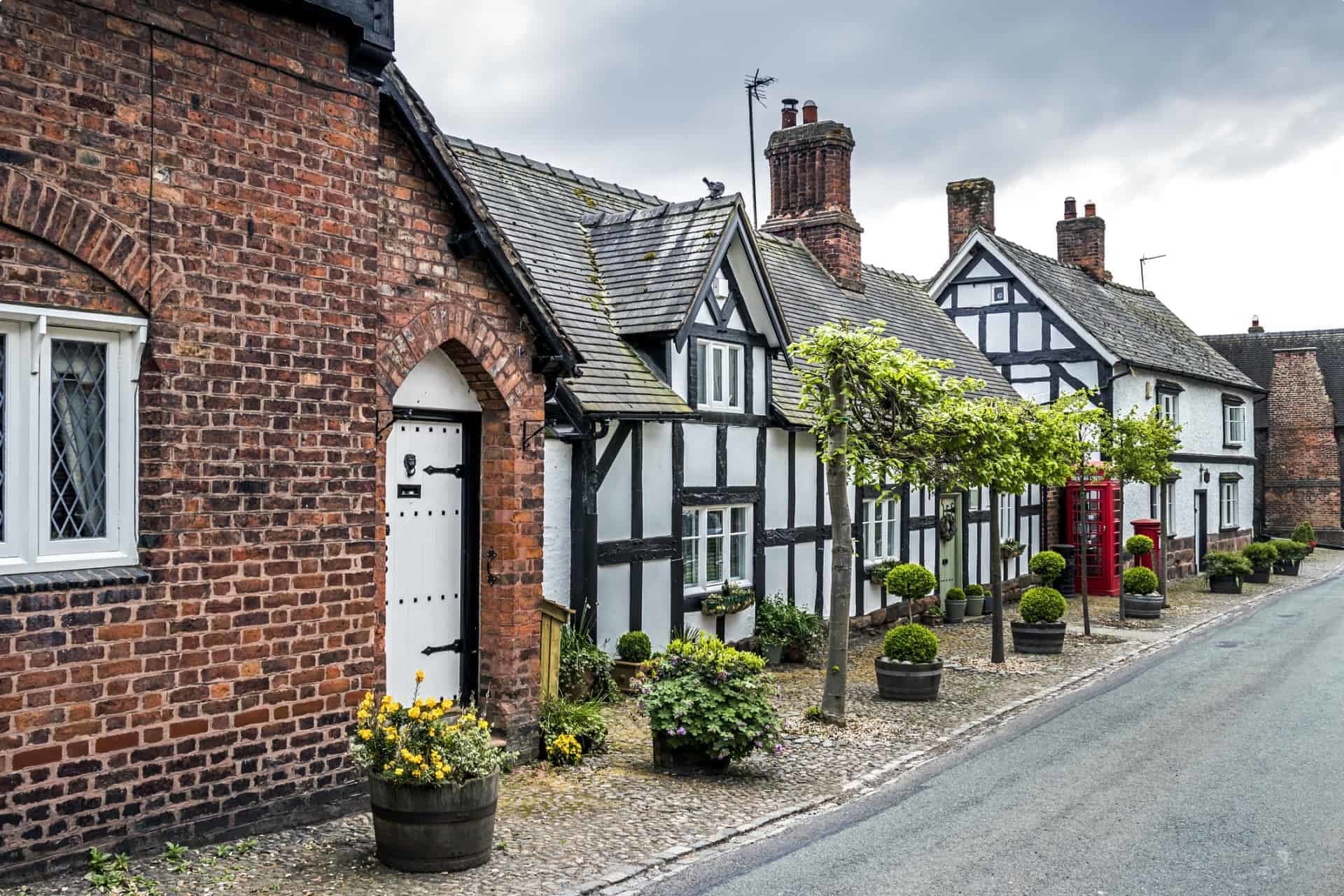
Delve into the history of 16th-century England and Spain on Odyssey Traveller’s 21-day Traveller’s Habsburg Spain vs Tudor England Small Group Tour. On this small group tour exploring the life and times of two of Europe’s most significant royal families – the Habsburgs of Spain and the Tudors of England – you’ll get know the fascinating personalities who emerged in each nation, as well as the legacy the empires left behind. This tour examines both the achievements of the Habsburgs and Tudors, as well as the historical forces that shaped them and they in turn shaped themselves.
Our 21-day tour exploring this fascinating period in European history begins in England, where we concentrate on the lives and monuments associated with Henry VIII and his long-reigning daughter, Elizabeth I. From England, we travel on to Spain for the second half of our tour, spending time to see tour highlights in Cadiz, Granada, Cordoba, Toledo and Madrid. Here we delve into the lives of those royal Hapsburgs who had the greatest impact on Spain, including Isabella and Ferdinand, Joanna the (possibly) Mad, and her husband Philip the Handsome., their son, Charles V, who served as the Holy Roman Emperor, and his son, Philip II.
Click here for more details! Or If you’re interested in something else, small group tour of Habsburgs & Tudors is only one of the many Spain and England tours offered by Odyssey Traveller.
Odyssey Traveller has been serving global travellers since 1983 with educational tours of the history, culture, and architecture of our destinations designed for mature and senior travellers. We specialise in offering small group tours partnering with a local tour guide at each destination to provide a relaxed and comfortable pace and atmosphere that sets us apart from larger tour groups. Tours consist of small groups of between 6 and 12 people and are cost inclusive of all entrances, tipping, and majority of meals. For more information, click here, and head to this page to make a booking.
Articles published by Odyssey about Spain and England
The following list of articles published by Odyssey Traveller for senior travellers to maximise their knowledge and enjoyment of Spain & England when visiting;
- 15 of the best places in Spain to visit.
- Travel notes for Barcelona
- Ten of the best books published on Spain
- Ten of the Best art galleries in Europe to visit.
- Discovering Spain (and Portugal )
- Understanding British Churches
- English Village History
- Britain’s National Trust.
External articles to assist you on your visit to Spain & England
Related Tours
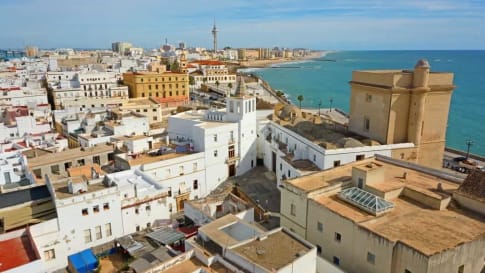
21 days
May, Aug, SepHabsburg Spain vs Tudor England: small group tour exploring 16th century history of England & Spain
Visiting England
This holiday with a leading tour operator allows the escorted tour for seniors to explore the life and times of the royal families responsible for making England and Spain so significant in the 16th century with local guides providing the travel experience for the detailed itineraries. We spend 10 days travelling from London to Madrid.
From A$14,995 AUD
View Tour
22 days
Apr, SepSmall group tours Medieval England
Visiting England
A small group tour of England focused on Medieval England and Wales. Spend 21 days on this escorted tour with tour director and local guides travelling from Canterbury to Cambridge, passing through Winchester, Salisbury, Bristol, Hereford and Norwich along the way. Castles, villages, Cathedrals and churches all feature in the Medieval landscapes visited.
From A$15,395 AUD
View Tour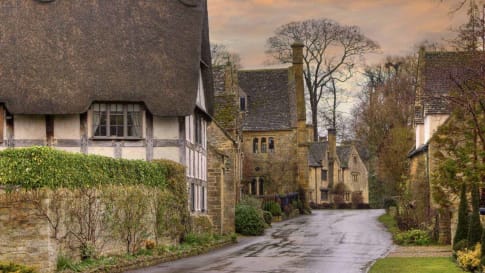
19 days
Jun, SepEngland’s villages small group history tours for mature travellers
Visiting England
Guided tour of the villages of England. The tour leader manages local guides to share their knowledge to give an authentic experience across England. This trip includes the UNESCO World heritage site of Avebury as well as villages in Cornwall, Devon, Dartmoor the border of Wales and the Cotswolds.
From A$17,845 AUD
View Tour
22 days
Sep, JunRural Britain | Walking Small Group Tour
Visiting England, Scotland
A walking tour into England, Scotland and Wales provides small group journeys with breathtaking scenery to destinations such as Snowdonia national park , the UNESCO world heritage site Hadrians wall and the lake district. each day tour provides authentic experiences often off the beaten path from our local guides.
From A$16,675 AUD
View Tour
21 days
Sep, MayDiscover Spain
Visiting Spain
Join this small group travel, 21-day tour of Spain. For couples or solo traveler with minimal single supplement has daily itineraries with local guides that provide authentic experiences for those who seek small group journeys. Escorted tour begins in Madrid, finishes in Barcelona.
From A$14,750 AUD
View Tour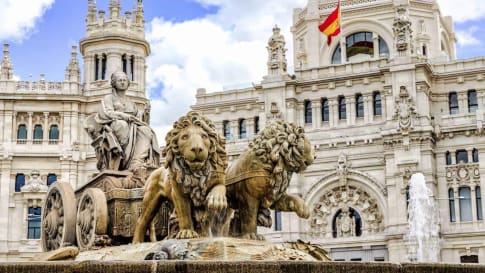
days
Apr, Sep, Oct, MarShort Spain Tour for senior and mature travellers
Visiting Spain
Join our small group guided tour of Spain, exploring this fascinating country over 10 nights with like minded people. We start in Barcelona and make our way slowly towards Madrid. Enjoy the food and culture while learning about the history of each location from our expert local guides and Odyssey Program Leader.
From A$7,990 AUD
View Tour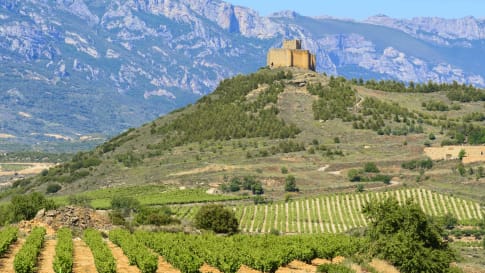
24 days
Apr, Oct, MarSmall Group Guided Tours of Spain and Portugal
Visiting Portugal, Spain
Our program explores the lands of Spain and Portugal, two countries bound by many centuries of history reflected in their modern cultures. Divided by history and language, contiguous neighbours Spain and Portugal were once host to gigantic empires that still bear their languages and lifestyles. A small group tour for couple and solo travellers.
From A$17,035 AUD
View TourRelated Articles
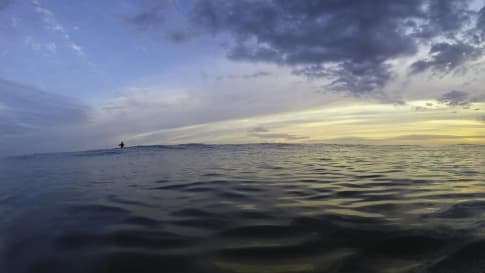
Atlantic Ocean and How it Shaped Ancient Communities In Europe
Article of interest for senior couples and mature solo travellers joining a small group European tour to Faroe Islands, Scottish Isles, Morocco or Portugal. Focus is on the early exploration of the Atlantic.
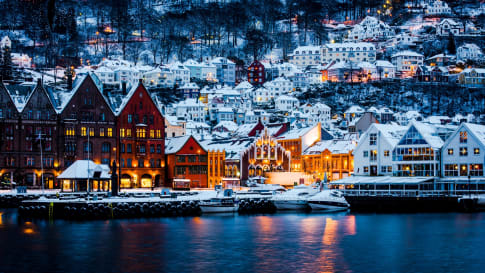
Hanseatic League
An Article on the early trading of Germany and the Baltic states by an Antipodean travel company serving World Travellers since 1983 with small group educational tours for senior couples and mature solo travellers who are curious.
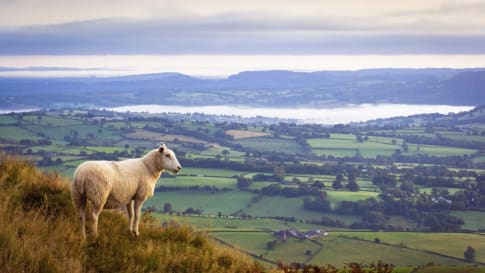
History of English Wool
English wool generated a lot of wealth for the merchants. Traded from Bruges to Venice, a product taxed by Kings and in demand across Europe. Click through to read more.n An Antipodean travel company serving World Travellers since 1983 with small group educational tours for senior couples and mature solo travellers.

London Coffee Houses
The coffee house of London, home for merchants, politicians, gossip. This article explores Georgian London history. An Antipodean travel company serving World Travellers since 1983 with small group educational tours for senior couples and mature solo travellers.

Medieval British Village Life: The Definitive Guide for Seniors
Life in the Medieval British Village In a previous article, we looked at the icons of the British village–the pub and the cottage–and looked at their history and evolution from Roman and Norman times. In…
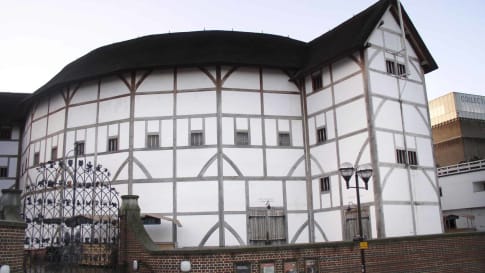
The Globe Theatre, London
Article about the Globe theatre and its place in London and Shakespeare's Stratford upon Avon. Stories and learning for senior couples and mature solo travelers on a small group tour.
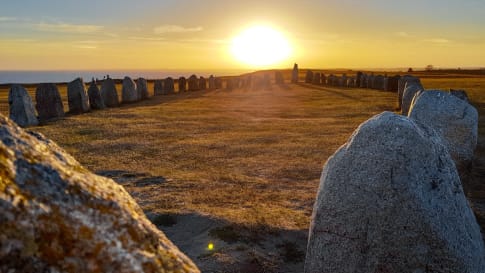
Vikings-explorers, raiders, traders
Article introducing Vikings and Outhere the explorer. Learn more on a small group educational tour for senior couples and mature solo travelers going to Iceland, Greenland, the Arctic circle or the Orkney islands.
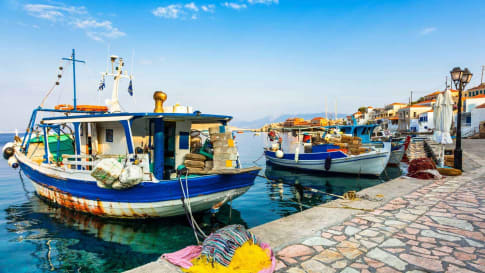
Empires Crossing the Mediterranean: 1130-1300
As a sea connecting continents and stretching from the Atlantic Ocean in the west to Asia in the east, the Mediterranean has for centuries been a centre of trade and exploration.
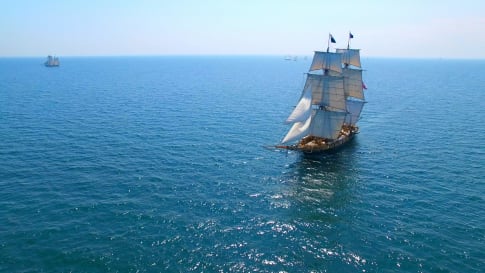
Spanish Exploration and Conquest of the Americas
An Antipodean travel company serving World Travellers since 1983 with small group educational tours for senior couples and mature solo travellers. Article summarizes the Spanish explorers and the race against the Portuguese for access to the Americas.
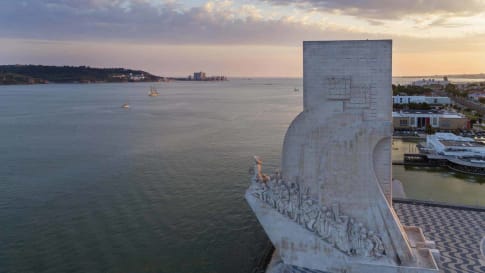
'Queen of the Sea': Lisbon: The Definitive Guide for Travellers
‘Queen of the Sea’: A History of Lisbon In 1554, the writer Damião de Góis claimed that out of all the European cities, only Lisbon and her rival Seville ‘could rightfully be called Ladies and…

Empires in World History
Empires shape history and influence the format of many of our small group tours. The Mongol, Persian, Roman, British and Ottoman empires are just a few An Antipodean travel company serving World Travellers since 1983 with small group educational tours for senior couples and mature solo travellers.
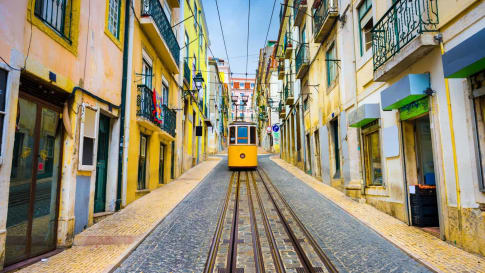
The Golden Years of Lisbon
Successfully breaking the Venetian monopoly on spices and also cornering the African market made Portugal cash-rich. Pepper, which the Portuguese bought for two cruzados (gold coin) a sack in Cochin, India, was sold for 30 cruzados in Lisbon.


